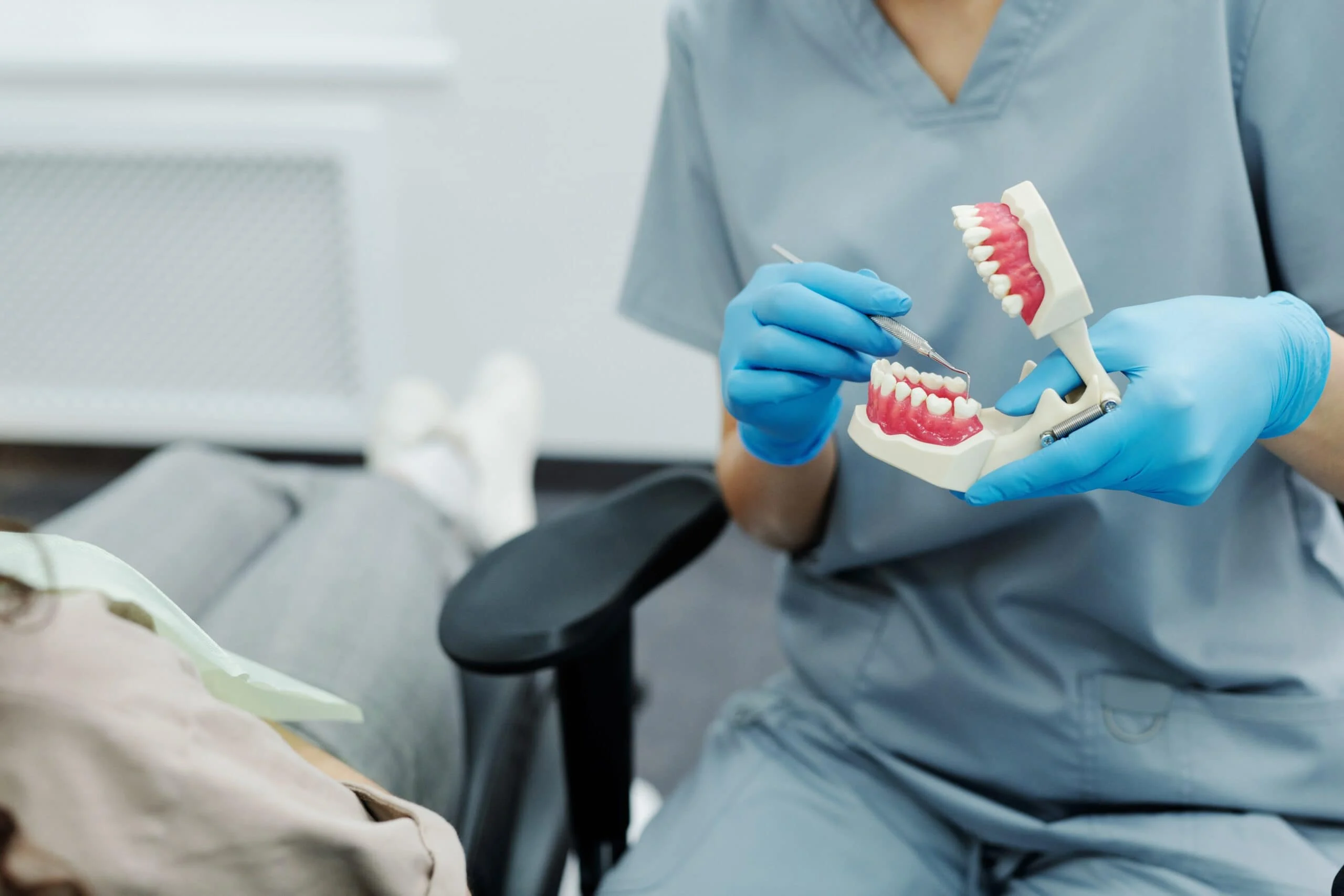Periodontal disease, also known as periodontitis, is a condition that occurs when harmful bacteria accumulate in plaque around the teeth and gums, leading to inflammation. If not addressed, this inflammation has the potential to lead to gum and supporting bone deterioration, resulting in issues like receding gums, formation of pockets, loss of bone structure, and, ultimately, the loss of teeth.
Several factors can enhance the risk of developing periodontitis, including genetics, poor oral hygiene, smoking, certain medications, underlying health conditions like diabetes, and weakened immune systems. Let’s start to discuss the answer to your search term: What are the 4 stages of periodontal disease?
What Are The 4 Stages Of Periodontal Disease?
- Stage 1: Gingivitis, The initial stage of periodontitis, is called gingivitis. During this stage, you may notice that your gums appear red and swollen and experience bad breath. Additionally, your gums might bleed when you brush or floss. The good news is that this stage is reversible with proper care. By improving your at-home dental hygiene routine and visiting your dentist regularly, you can effectively treat gingivitis
- Stage 2: Slight Periodontal Disease The second stage, known as slight periodontal disease, is not reversible but can be managed. In this stage, bleeding, redness, and swelling of the gums become more prominent. However, you may not experience any pain at this point. The infection begins to spread below the gum line, damaging the bone that supports the teeth
- Stage 3: Moderate Periodontal Disease During the moderate stage of periodontal disease, the bacteria penetrate deeper into the gums, causing more significant bone loss. As a result, the jawbone is further attacked, and the infection can even spread to the bloodstream. The probing depth of the gums increases, and the damage becomes more extensive
- Stage 4: Advanced Periodontal Disease Advanced periodontal disease is the most severe stage, where teeth lose structural support. As a result, your teeth may become loose, and abscesses could form. Inflammation of the gums intensifies, making it difficult to eat due to pain while chewing. You may also experience severe bad breath, and the risk of tooth loss becomes imminent
Treating Periodontal Disease Prevention is always better than cure when it comes to gum disease. Maintaining proper oral hygiene is important for preventing periodontitis. This involves adhering to a routine of regular brushing, flossing, and scheduling periodic dental checkups and cleanings with your dentist. These practices collectively contribute significantly to the prevention of periodontal disease. However, if you already have periodontal disease, immediate treatment is essential. The treatment options will depend on the complexity of your condition.
Some Common Periodontal Treatments Include:
- Dental Hygiene Visits: Regular dental hygiene visits involve removing plaque and tartar from the teeth and gums, especially below the gum line. It is recommended to have dental cleanings at least twice a year. If signs of gum disease are present, more frequent visits may be advised. Dental hygiene visits are effective in preventing and treating periodontal disease in its early stages
- Scaling and Root Planing: It is a non-surgical deep cleaning procedure. It involves removing plaque and calculus from the tooth surfaces and smoothing the roots to facilitate gum reattachment. This procedure helps eliminate bacteria and provides a clean surface for the gums to heal. Scaling and root planing are typically recommended for slight periodontal disease
- Regenerative Periodontal Procedures: For advanced stages of periodontal disease, more advanced procedures may be necessary. These may include removing calculus from deep pockets and performing bone grafting to replace deteriorated bone. Bone grafting involves using donated bone, synthetic materials, or your bone to restore the damaged bone. Soft tissue grafts can also be utilized to reinforce receding or thin gums
- Laser-Assisted Periodontal Procedures: In some cases, laser-assisted periodontal treatment procedures may be employed for later stages of periodontal disease. These procedures are less invasive and often result in reduced post-treatment sensitivity. Laser treatments also have minimal downtime compared to traditional methods. However, not all cases are suitable for laser treatment, and your periodontist will determine the best approach for your situation
Final Words: What Are The 4 Stages Of Periodontal Disease?
If you are feeling symptoms of periodontal disease, it is crucial to schedule an appointment with a periodontist for a proper diagnosis and treatment. Furthermore, if you have any queries about your question, then comment below. We will answer you in a more straight way.



